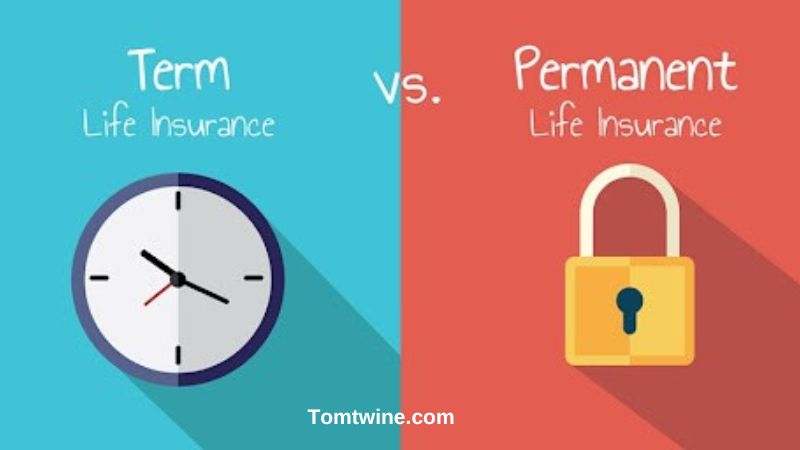
Term life insurance for kids is a subject that often raises eyebrows and prompts questions among parents. While life insurance is commonly associated with adults, there are scenarios where purchasing term life insurance for children can provide financial security and peace of mind for families. In this guide, Tomtwine will delve into the intricacies of term life insurance for kids, exploring its benefits, considerations, and whether it’s a suitable option for your family’s needs.
Introduction to Term Life Insurance for Kids:
Term life insurance for kids, as the name suggests, is a type of life insurance designed specifically for children. It offers coverage for a predetermined period, typically until the child reaches adulthood. While the idea of insuring a child may seem unusual, there are valid reasons why parents may choose to do so.
Benefits of Term Life Insurance for Kids:
One of the primary benefits of term life insurance for kids is financial protection in the event of an unexpected tragedy. While no parent wants to entertain the thought of losing a child, having insurance coverage can help alleviate the financial burden during such a challenging time. The death benefit provided by the policy can cover funeral expenses, medical bills, and other costs associated with the loss.

Moreover, term life insurance for kids is often affordable, with premiums significantly lower than those for adults. This makes it accessible for many families, allowing them to secure coverage without breaking the bank. Additionally, some policies offer guaranteed insurability, enabling the child to purchase additional coverage as an adult, regardless of their health status.
Understanding Coverage Options:
When considering term life insurance for kids, it’s essential to understand the coverage options available. Policies typically offer coverage for a specified term, such as 10, 20, or 30 years. The death benefit remains constant throughout the term, providing a fixed amount of financial protection.
Additionally, some policies include riders or optional add-ons that can enhance the coverage. Common riders include accelerated death benefit riders, which allow for the early payout of a portion of the death benefit if the child is diagnosed with a terminal illness, and waiver of premium riders, which waive the premium payments if the policyholder becomes disabled.
Comparing Term Life Insurance to Permanent Life Insurance:
While term life insurance for kids is one option, parents may also consider permanent life insurance policies, such as whole life or universal life insurance. Unlike term life insurance, permanent life insurance policies provide coverage for the child’s entire life and include a cash value component that accumulates over time.

However, permanent life insurance policies tend to be more expensive than term life insurance, making them less accessible for many families. Additionally, the cash value component may not be a significant consideration for parents seeking insurance primarily for financial protection rather than investment purposes.
Factors to Consider Before Purchasing:
Before purchasing term life insurance for kids, parents should carefully evaluate their family’s financial situation and insurance needs. Considerations include the child’s age, health status, and the family’s long-term financial goals. It’s also essential to review the policy terms, including the coverage amount, premium payments, and any exclusions or limitations.
Furthermore, parents should consider alternative sources of financial protection, such as savings accounts, investments, and employer-sponsored life insurance policies. While term life insurance for kids can provide valuable coverage, it may not be necessary for every family, particularly those with robust financial resources and other forms of insurance coverage.
Navigating the Application Process:
Applying for term life insurance for kids typically involves completing an application and undergoing a medical underwriting process. While children are generally considered low risk, insurers may still require basic health information to determine eligibility and premium rates. This may include details about the child’s medical history, current health status, and family medical history.
Additionally, parents will need to designate a beneficiary to receive the death benefit in the event of the child’s passing. This is typically a parent or guardian but can also be a trust or other legal entity. It’s essential to review and update the beneficiary designation as needed to ensure the policy aligns with the family’s wishes.
Understanding Policy Renewal and Conversion Options:
Term life insurance for kids typically expires at the end of the term, leaving the child uninsured as they enter adulthood. However, many policies offer renewal options that allow the child to extend coverage for an additional term without undergoing a medical exam. Additionally, some policies include conversion options that enable the child to convert the term policy into a permanent life insurance policy, providing lifelong coverage without the need for additional underwriting.

Conclusion:
In conclusion, term life insurance for kids can provide valuable financial protection for families in the event of an unexpected tragedy. While it may not be necessary for every family, it’s worth considering for those seeking affordable coverage and peace of mind. By understanding the benefits, coverage options, and considerations involved, parents can make informed decisions about whether term life insurance for kids is the right choice for their family’s needs.